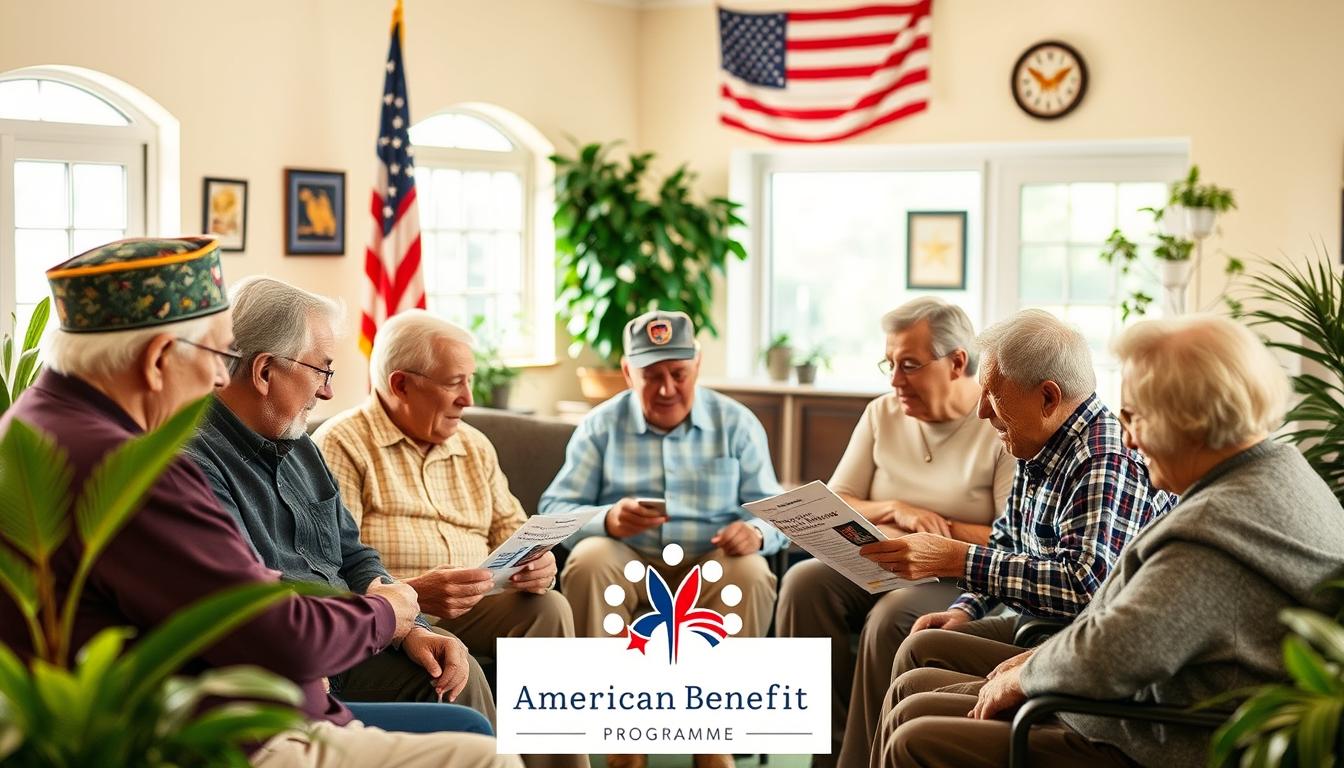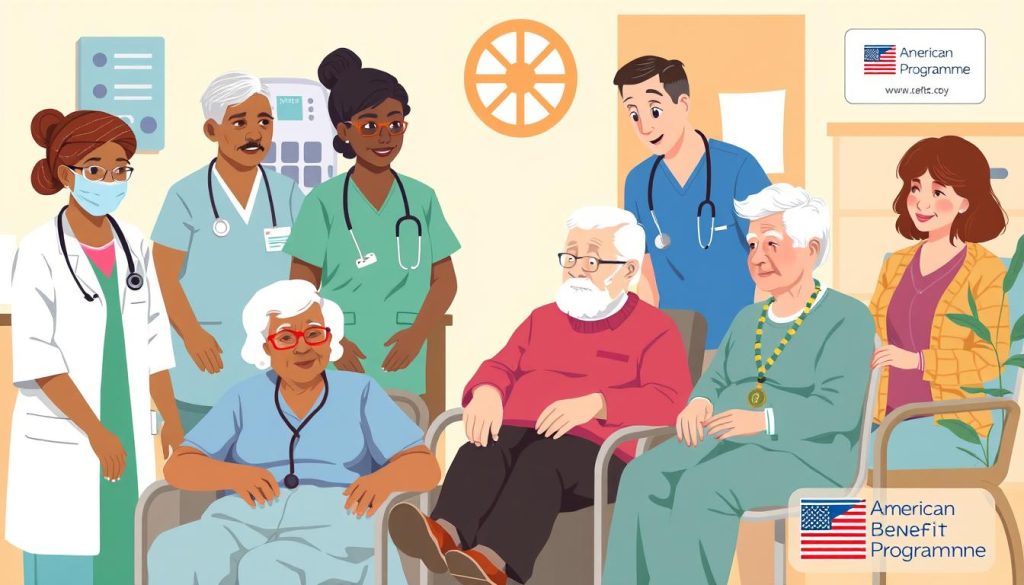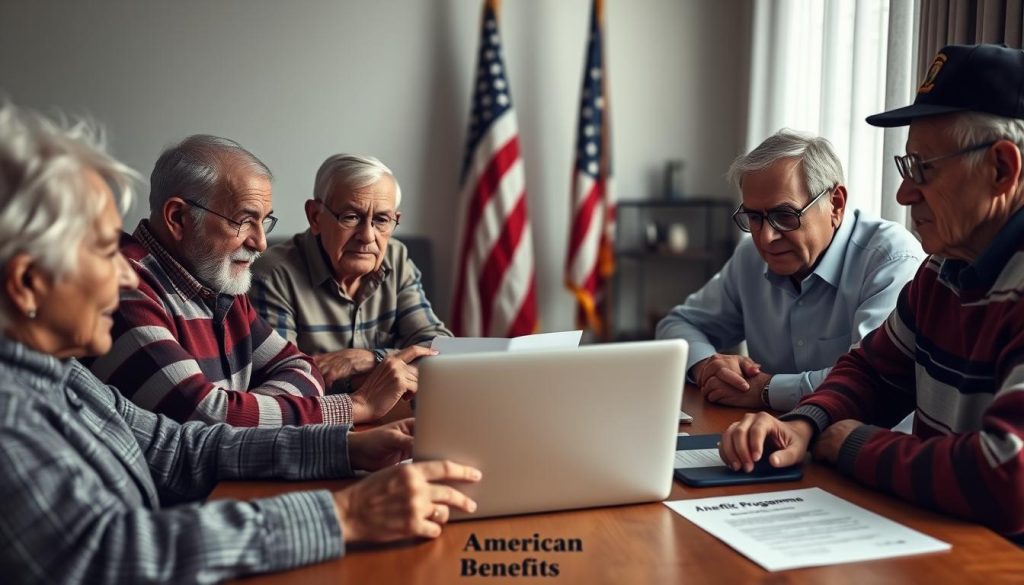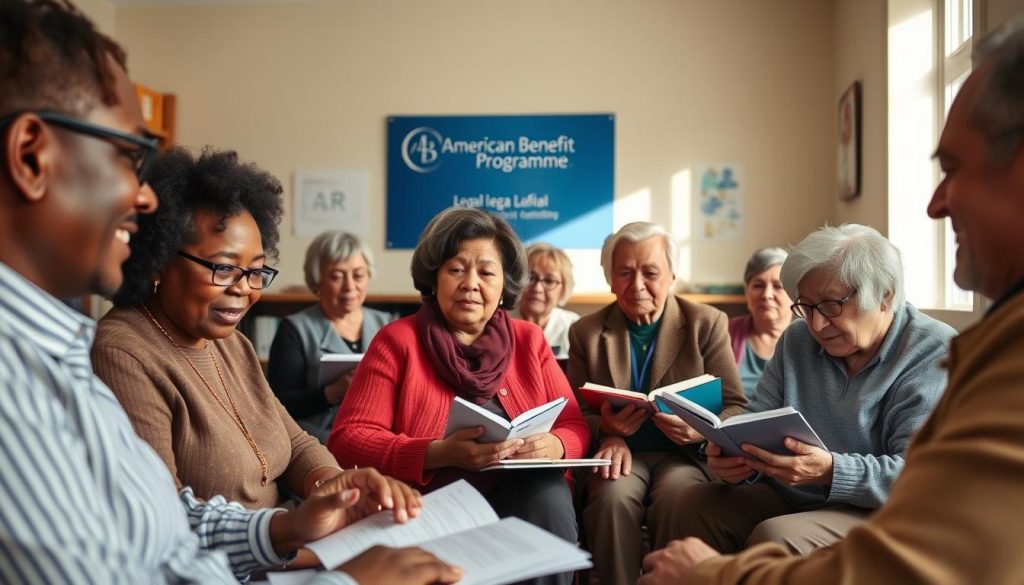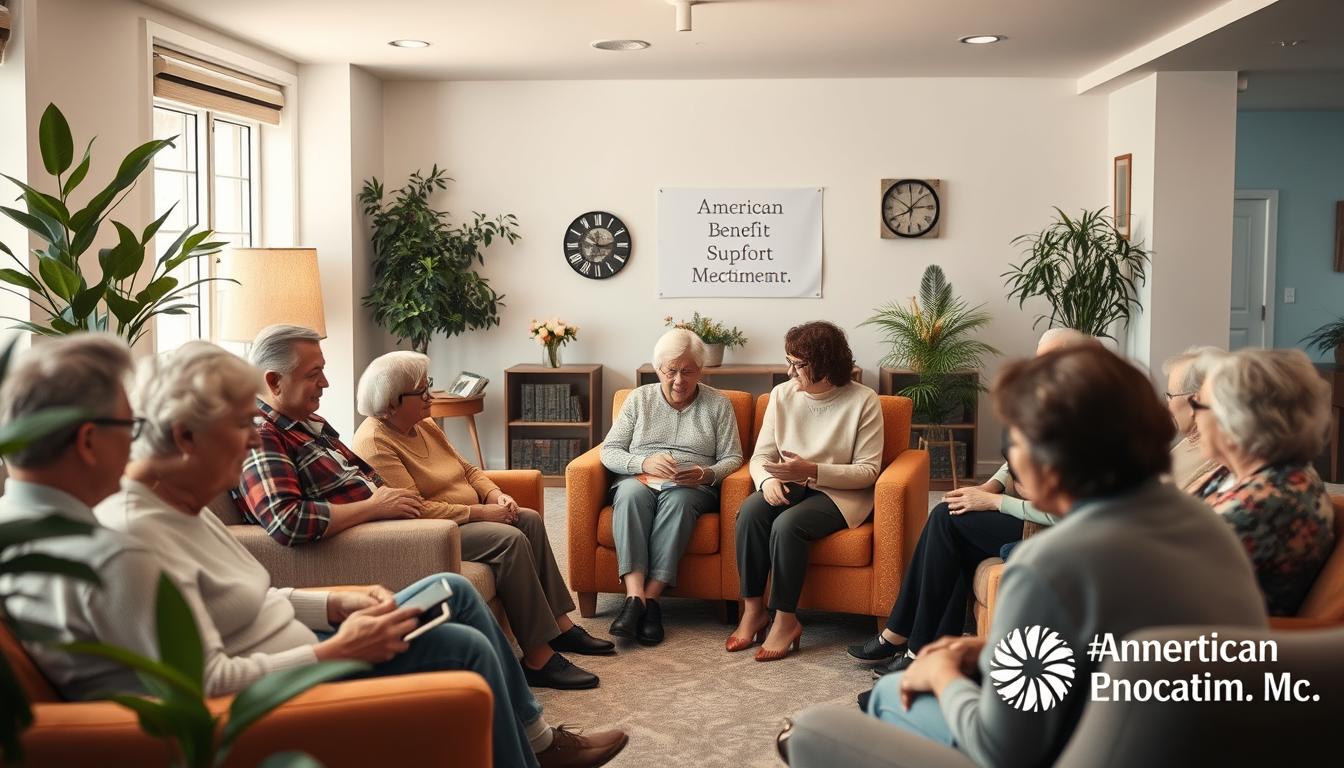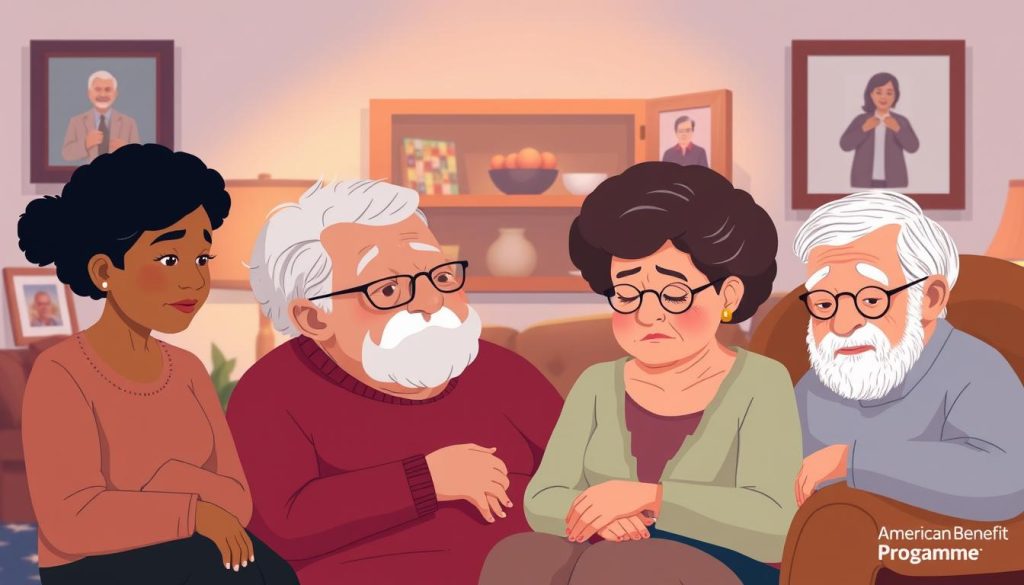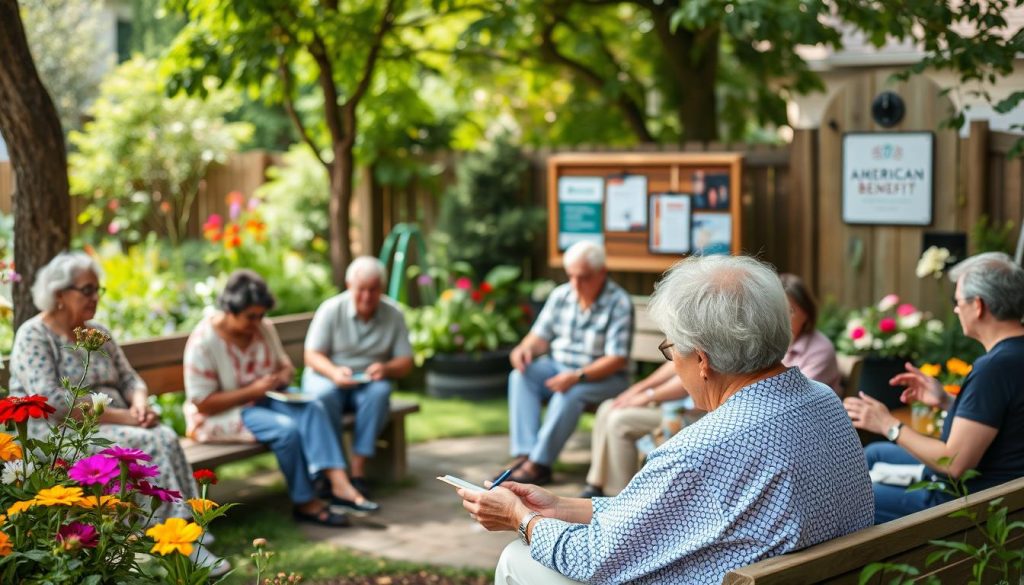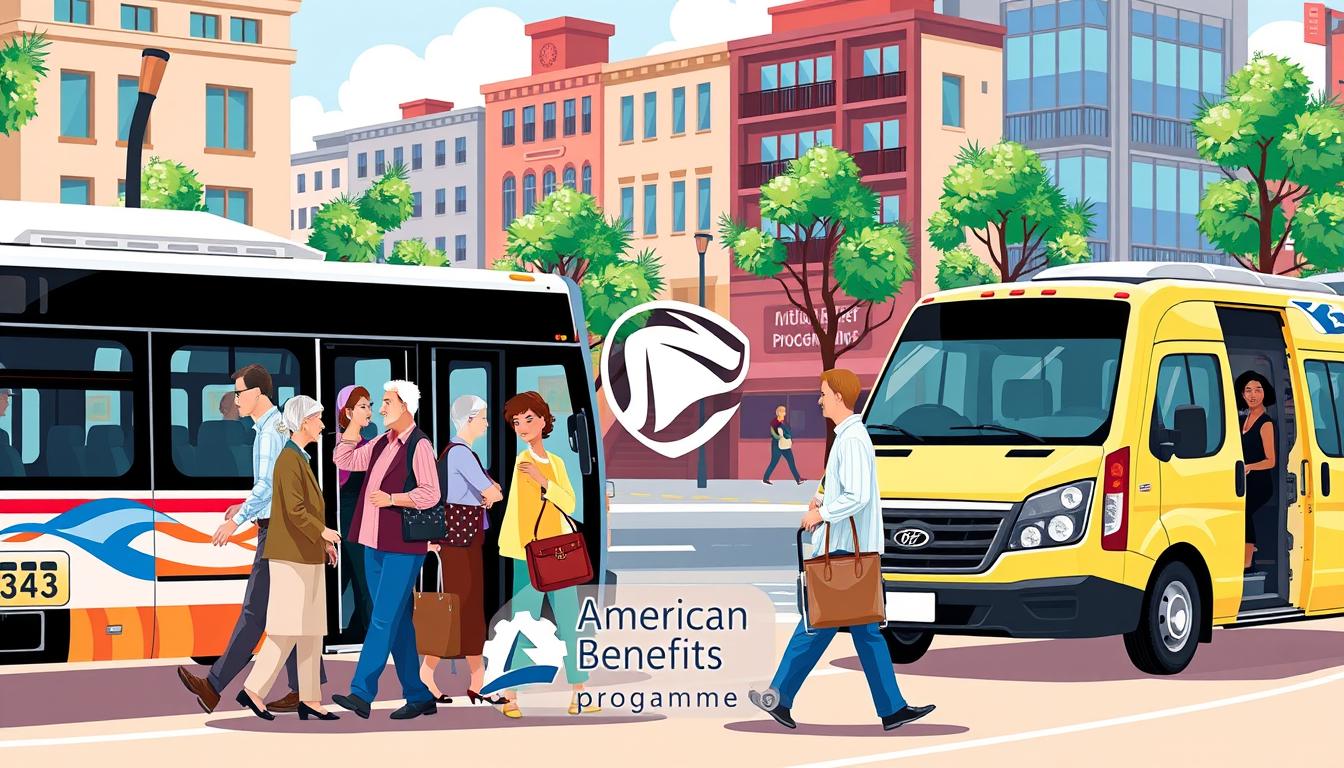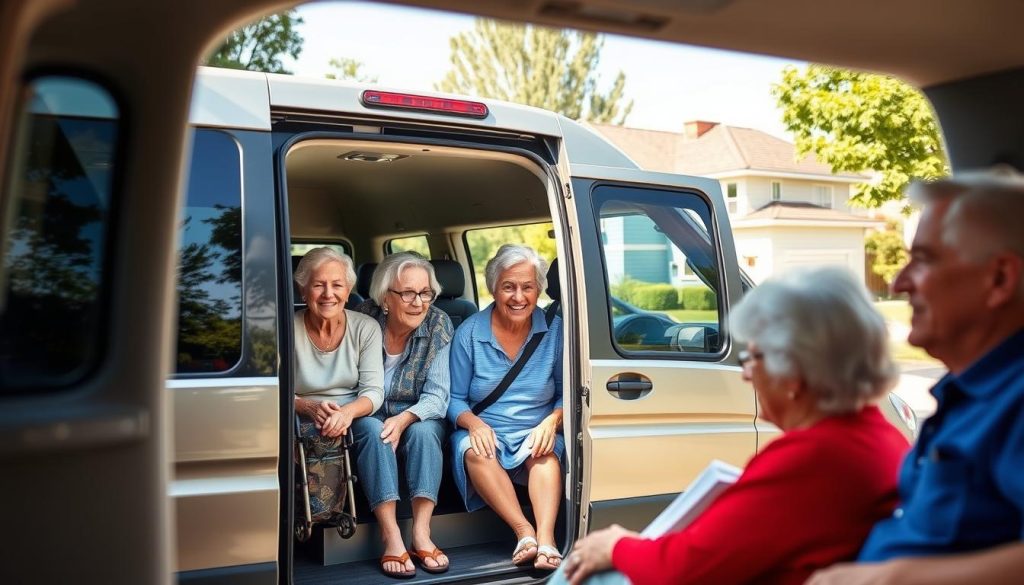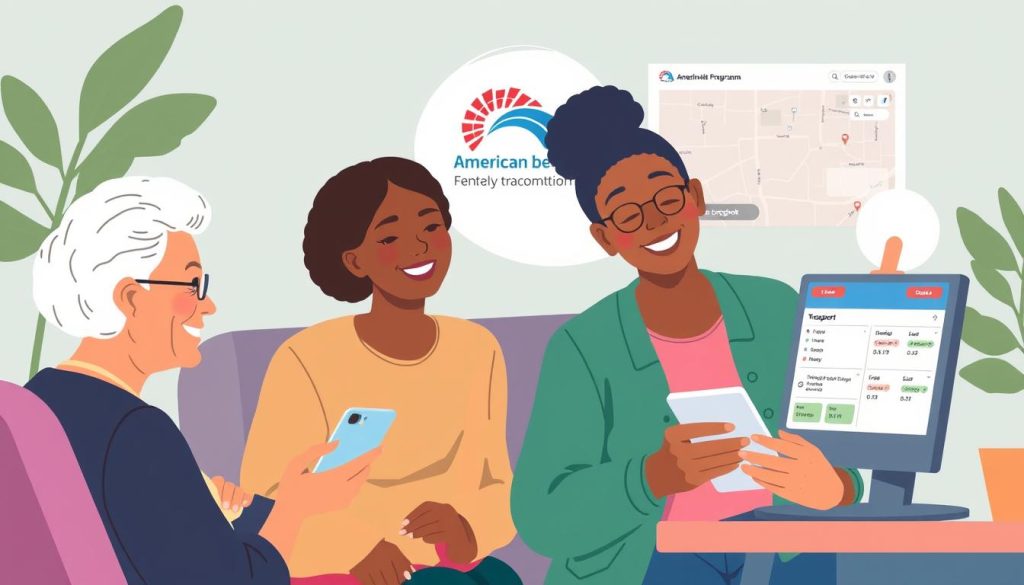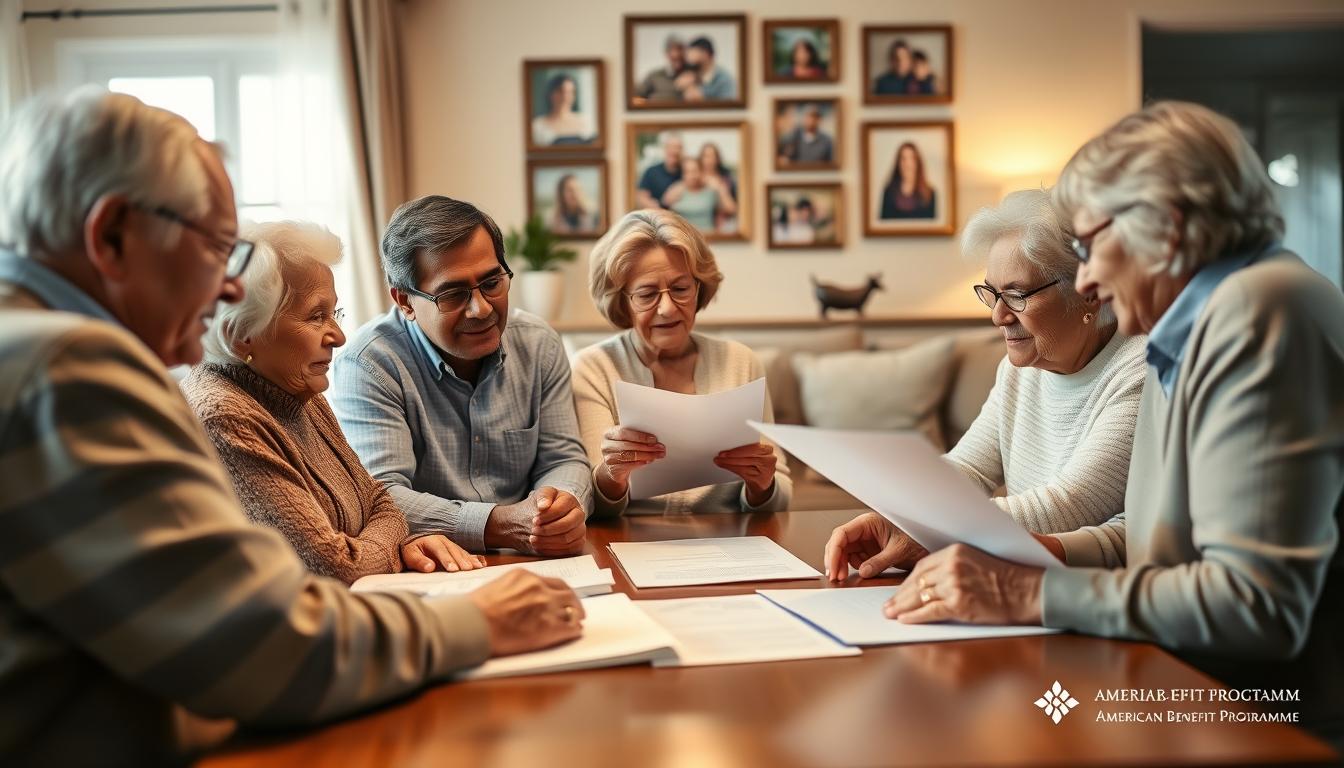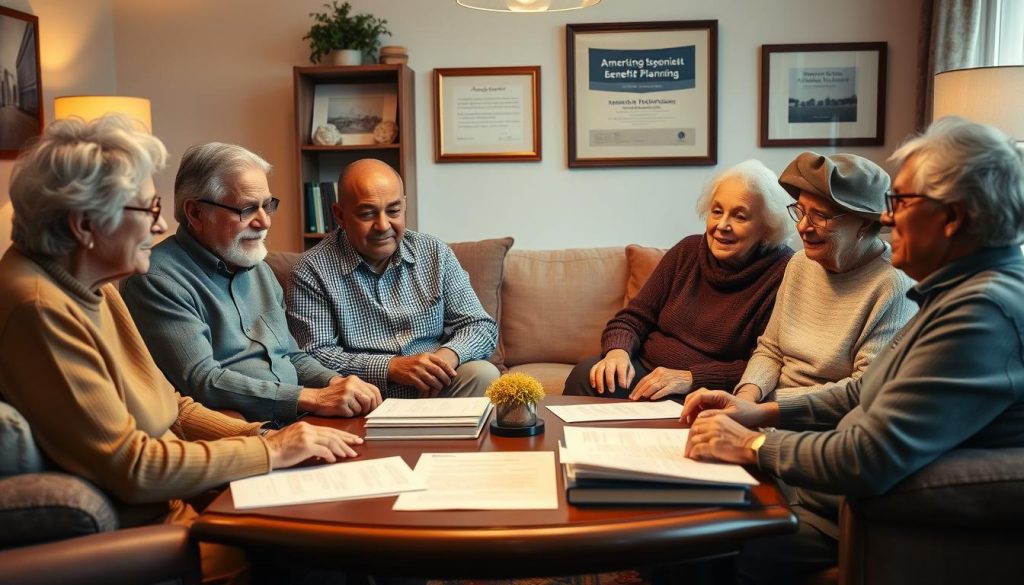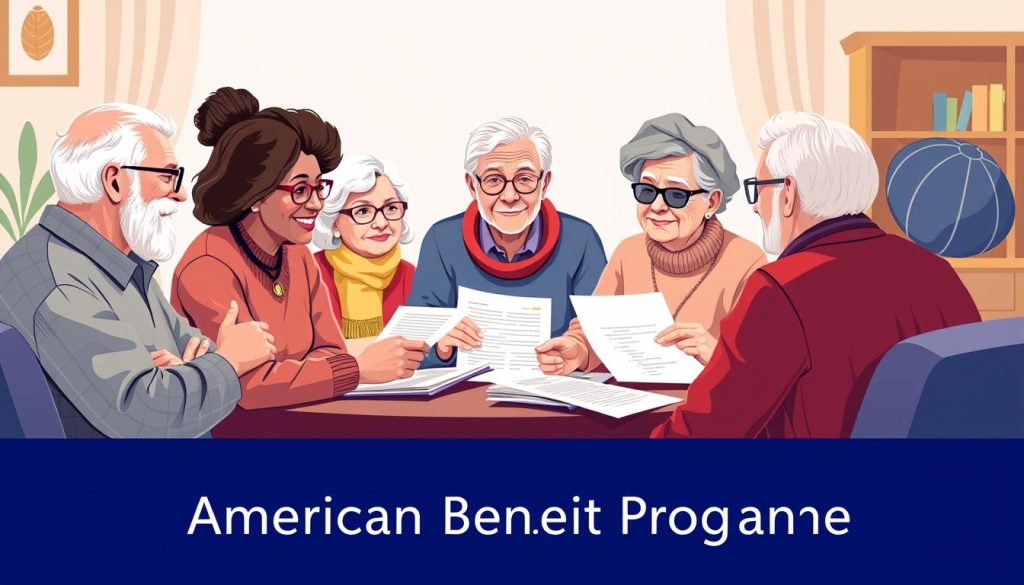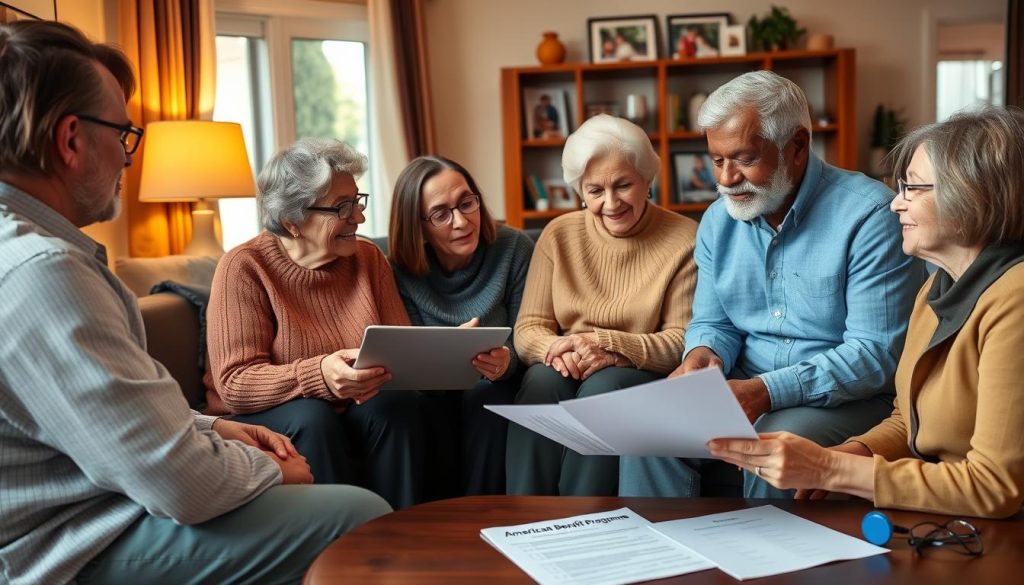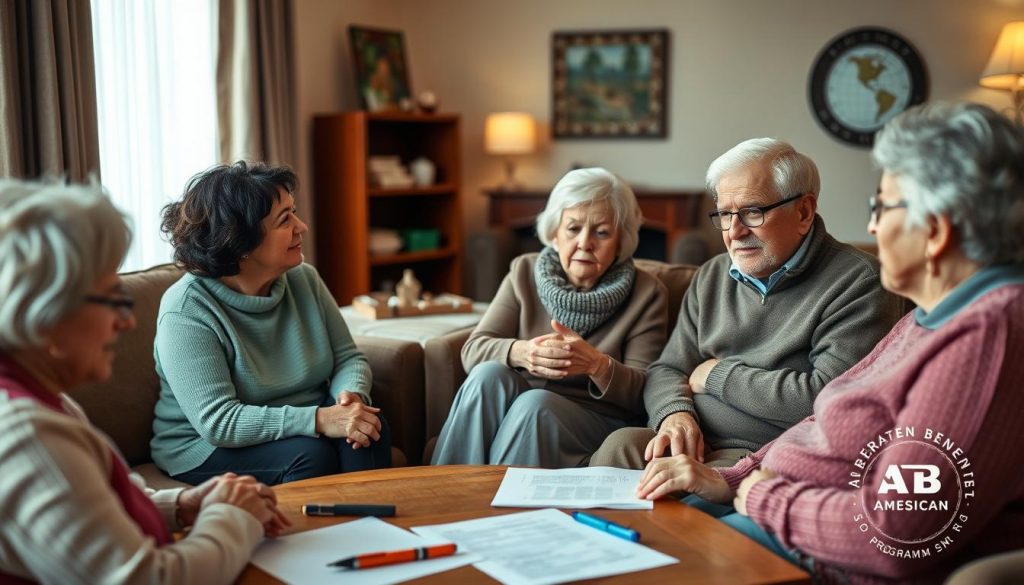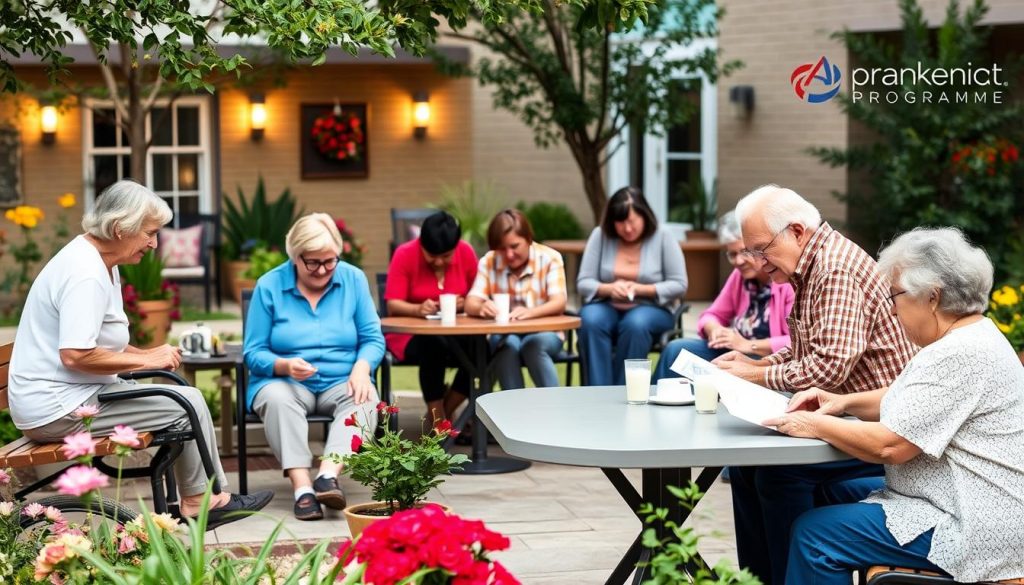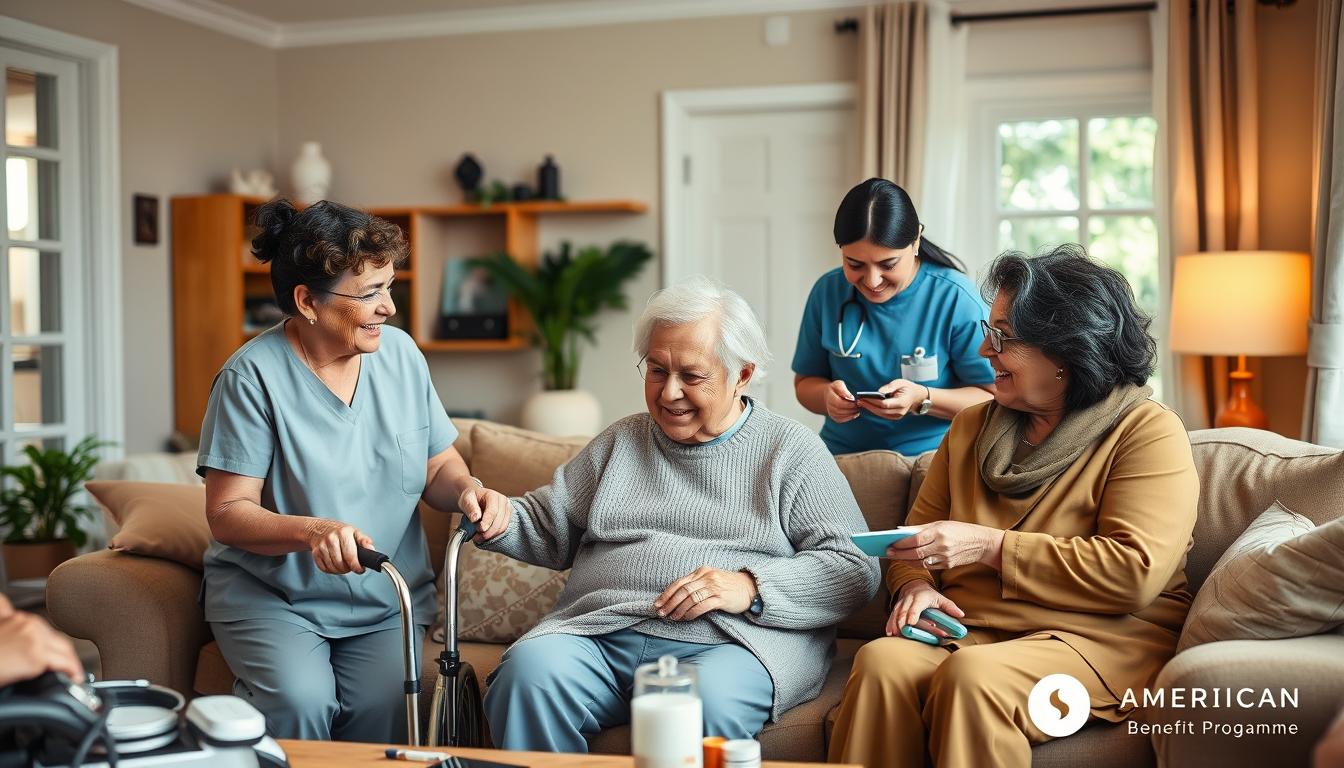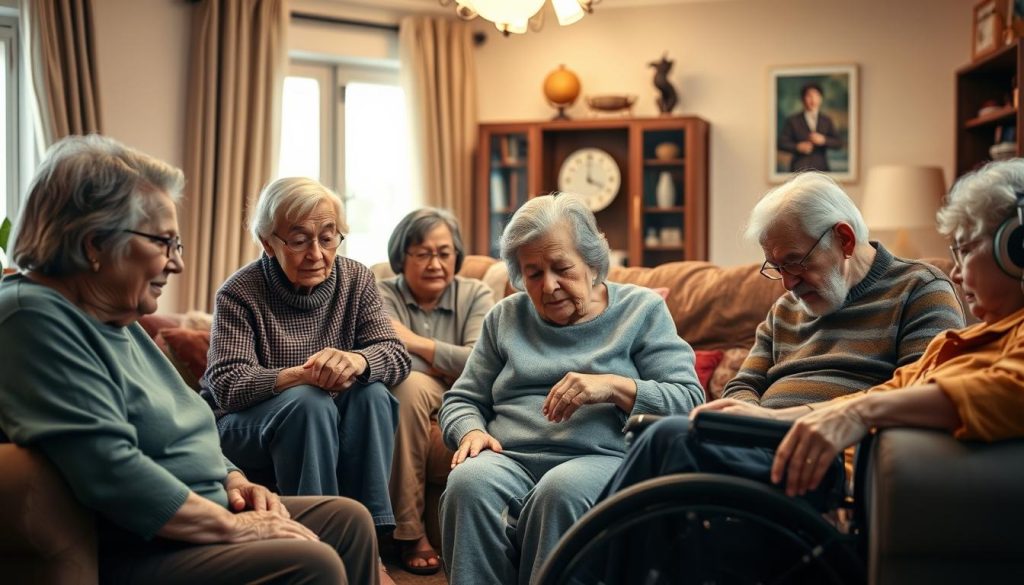More and more people are getting Alzheimer’s disease. Families have to make hard choices about care. Think about how these choices will affect the patient and caregiver’s future.
Alzheimer’s is behind 60-80% of dementia cases. It’s key to know the care options out there1. Studies show caregivers like specialized services. They feel less anxious and sad2. Looking into memory care, in-home care, and long-term facilities can be a lot. But this guide will help families find the right care for their loved ones with Alzheimer’s.
Key Takeaways
- Understanding Alzheimer’s is essential for selecting appropriate care options.
- Choosing the right care can improve the quality of life for both patients and caregivers.
- Memory care facilities offer 24/7 support tailored to cognitive impairment needs.
- Home care gives Alzheimer’s patients the comfort of familiar surroundings.
- Caregiver satisfaction is higher among those who utilize specialized services.
- Evaluating care facilities based on various factors can ensure a safe environment.
- Effective communication with healthcare providers is key in navigating care options.
Understanding Alzheimer’s Disease
Alzheimer’s disease is a brain condition that worsens over time. It mainly affects memory, thinking, and how we act. Most often, it begins after age 65. This is a key time for spotting and treating it3. Alzheimer’s is the top kind of dementia, impacting lots of people and their loved ones3.
People with this illness may forget things and get confused. These problems get worse as the illness does. They might get upset easily, pace a lot, or ask the same thing over and over4. This can make everyday things hard to do4. Keeping up with friends can be tough, too. This might make them feel lonely4.
Taking care of memory is key for those with Alzheimer’s. Memory care places offer the right kind of help. They have health care pros who give medical care right there3. These places make sure residents are safe. They also make life feel more normal, which helps residents feel good about themselves3.
To help residents not get lost, these places use signs and colors. They also have fun activities. These help keep the brain active and help people make friends3.
The Importance of Choosing the Right Care Option
Finding the best Alzheimer’s care is key to improving life for those with this condition. Alzheimer’s makes up 60-80% of all dementia cases. This highlights the need for care that fits each person’s needs5. Families should think hard about what kind of care is best, since care needs vary with dementia’s stages. For instance, someone in the middle stages might need someone around all the time. This need grows in the late stages of dementia6.
Deciding when someone with dementia should move to a care home can be tough. It matters how well they handle daily life, their safety, and how much help they need7. Staying at home can present problems with taking meds, staying safe, and eating right7. There are other choices like hiring help or live-in care, but these can get expensive7.
When picking care providers, safety and watching over the person are top priorities. A good way to find providers is to get recommendations from the Alzheimer’s Association or doctors6. It’s important to check if the staff knows how to care for someone with dementia and if their care plans match the person’s needs6. Family being involved helps a lot and leads to better living for those in care5.
Alzheimer’s Care Options Available
When looking for Alzheimer’s care, knowing about different care settings helps families. These options, like in-home care, adult day centers, and memory care facilities, suit different needs. We will explore what each setting offers to help you decide.
Overview of Care Settings
Care settings can change an Alzheimer’s patient’s life quality. In-home care keeps them in a known place with services like companion care, personal care, and more8. Adult day centers provide a space for making friends and staying active9. Memory care facilities focus on advanced Alzheimer’s, ensuring care for communication and personal care needs9.
Benefits of Memory Care Services
Choosing memory care services has many pluses. They offer activities for the brain important in early and middle stages9. The staff knows how to handle changes in behavior and confusion9. Living there lets people be with others who understand them, giving social support9.
It’s key to pick the right care for Alzheimer’s individuals. Families should weigh all options to make choices that improve their loved ones’ life quality.
| Care Setting | Key Features | Target Audience | Training Requirements |
|---|---|---|---|
| In-Home Care | Personalized assistance in a familiar environment | Individuals wishing to stay at home | Trained in specific care needs & dementia |
| Adult Day Centers | Structured programs for socialization and activities | All stages of dementia | General training in dementia care |
| Memory Care Facilities | 24/7 specialized care in a secured environment | Advanced stages of Alzheimer’s | 4 hours of dementia-specific training10 |
In-Home Care for Alzheimer’s Patients
In-home care lets people with Alzheimer’s stay at home comfortably. Over 5.8 million in the US prefer this as the disease gets worse11. This choice helps them keep their dignity and stay in a known place.
Advantages of Staying at Home
Home care offers ongoing care. It keeps a sense of normal life, very important for people with memory issues. It also reduces worry, boosts mood, and keeps daily habits11. Studies show stable care at home may help people with dementia stay home longer. Visiting Angels offers tailored care, fitting each person’s needs. They provide care, whether part-time or full-time12.
Personalized Care Plans
Making a care plan just for one person is key for good Alzheimer’s care. Visiting Angels checks homes to make them safe12. This plan helps with everyday tasks, reminds about medicine, and gives emotional support. It meets the person’s likes and needs. This approach is vital as many with dementia don’t get the care they need11.
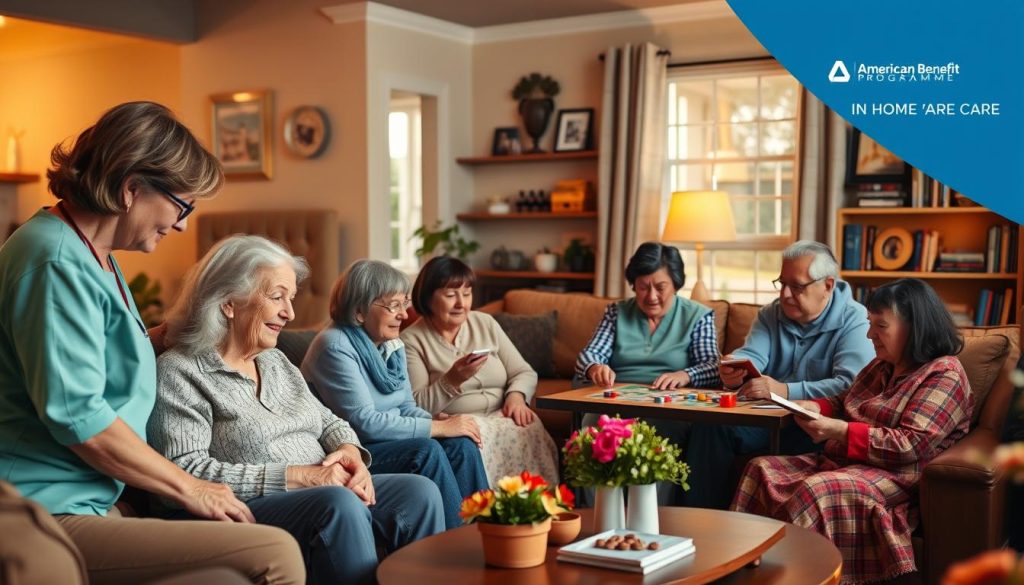
| Care Feature | In-Home Care | Facility Care |
|---|---|---|
| Comfort of Home | ✔ | ✘ |
| 24/7 Care Availability | ✔ | ✔ |
| Personalized Attention | ✔ | ✘ |
| Safe Environment | ✔ | Depends on Facility |
| Coordination with Family | ✔ | ✘ |
In-home care boosts independence and improves life quality. It lessens the disease’s effects on well-being. This support is crucial for families helping loved ones with Alzheimer’s.
To learn about making good care plans, check this useful link1211.
Adult Day Centers: A Supportive Resource
Adult day centers are vital for families taking care of people with Alzheimer’s. They offer activities in a safe place. These centers have services for seven to ten hours a day. They also have flexible times, including weekends and evenings13. This creates a healthy and friendly environment for seniors.
What to Expect from Senior Day Care
Senior day care offers many services. You’ll find health care, counseling, personal care, and help with food13. CareYaya helps seniors find student caregivers for sitting and friendship14. It’s wise for caregivers to check out centers more than once. Visiting a few times a week for a month helps decide if it’s a good match13.
Socialization and Engagement Opportunities
Socializing is key for happiness and sharp minds. Adult day centers have programs like art, thinking games, and pet therapy15. These activities lower stress and help with sleep. The average cost at these centers is about $78 a day15. This is less expensive than staying at home, which can cost about $170 a day15. This price makes it easier for families to afford good care.
Memory Support Programs: Enhancing Cognitive Health
Memory support programs help people with Alzheimer’s keep their minds sharp. They include fun activities like memory games and gentle exercise. These activities help slow down the loss of mental abilities, which worries many families.
About 60-70% of people with dementia need long-term care16. Memory programs make this easier by keeping the brain and body active. They use special therapies to make people feel better. These therapies have helped reduce signs of depression by 60%17.
These programs don’t just help the brain. They also take care of how people feel. Some strategies make life easier for the person with dementia and their caregiver17. They make sure everyone is treated kindly and respectfully. This helps maintain the person’s quality of life during their Alzheimer’s journey.
Long-Term Care Facilities for Alzheimer’s Patients
People with Alzheimer’s often move to long-term care facilities as their condition gets worse. About 60-70% of these patients need extra help that they can’t get at home. With different long-term care choices out there, families can find a good fit18.
Types of Long-Term Care Options
There are many care options for folks with Alzheimer’s:
- Assisted Living Facilities: Perfect for seniors who need a little help with daily stuff but not 24-hour care. Some places have special spots just for Alzheimer’s patients.
- Group Homes: Smaller places where a few people live. They always have caregivers around.
- Nursing Homes: For those who need lots of medical care. They even have special areas for Alzheimer’s patients.
- Continuum Care Retirement Communities: These have different types of living spaces and help. People can move to different parts as their needs change.
There are about 24 million people worldwide with Alzheimer’s. This shows how important good long-term care facilities are19.
Choosing a Memory Care-Certified Facility
It’s important to find a place that knows how to care for someone with Alzheimer’s. Look for places with staff trained in handling dementia problems. They should feel warm and welcoming. Remember, the cost can vary a lot based on where the place is and what type of care is needed20.
Look into long-term care options that are right for Alzheimer’s patients and their families. This ensures they get the support they need.
Specialized Care for Alzheimer’s Patients
Alzheimer’s patients need a lot of special care. This is a complex illness. Skilled staff and special programs help a lot. They improve the lives of these patients.
Importance of Trained Staff
Having skilled workers is very important. They know a lot about Alzheimer’s and its stages. They help patients get the right care as they change. Training helps with safety and happiness. It makes a good place for patients.
Caregivers face stress and health issues. They often need more support to do their work well21. Trained staff make a big difference.
Tailored Activities and Programs
Special activities and programs are key. They are made to fit each patient’s likes and abilities. From memory games to art, they keep minds active. They also bring joy and comfort.
These programs help staff a lot in caring for patients22. They boost the success of care.

| Service Type | Description | Typical Coverage |
|---|---|---|
| Home Health Care | Part-time medical services ordered by a physician. | Medicare provides limited coverage. |
| Adult Day Care | Less expensive option for social engagement and support. | Not covered by Medicare. |
| Hospice Care | End-of-life care focusing on comfort. | Covered by Medicare, Medicaid, and some private plans. |
| Respite Care | Temporary care to provide relief for primary caregivers. | Medicare covers up to five consecutive days. |
| Geriatric Care Management | Assistance with planning and resource handling. | Usually not covered by Medicare or Medicaid. |
Looking into Alzheimer’s care? Pick services that offer specialized care. They help patients and caregivers a lot. Want to know more? Go to this link. It has a lot of useful info on Alzheimer’s care22.
Transitioning Between Care Options
Moving care options for persons with Alzheimer’s is hard. It needs careful thinking and planning. Talking helps families and care teams prepare for changes. It reduces worry and keeps everyone informed23. Sharing stories and backgrounds with new caregivers helps give the right care23.
When choosing a facility, don’t rush. Understand what your loved one needs23. Look for the best memory care places. Visit and meet the staff to see if it fits23. Transition programs help a lot in adjusting to new care settings. They make the change easier23.
Changes in sleep, wandering, and eating may happen when moving. Caregivers need support too. They should take breaks and ask for help when needed. The Alzheimer’s Association’s hotline (800.272.3900) offers help and more services24.
Alzheimer’s Care Resources for Families
Taking care of someone with Alzheimer’s is hard. Families need good Alzheimer’s care resources. Many people in the U.S. care for someone with this disease. They need lots of help and support25. The Alzheimer’s Association is a key helper. They have a helpline that’s always open. They also offer free online lessons. These can teach you about Alzheimer’s and how to take care of someone with it26. This group also helps families of color who face extra challenges with Alzheimer’s26.
There are special resources for the LGBTQ+ community too. This makes sure everyone can get the help they need26. Kids can also learn strategies to understand Alzheimer’s. This helps make a supportive family setting26. It’s important to notice when caregiving gets too stressful. Many caregivers feel very worried and tired27. Talking to mental health experts can help. They can make caregiving a bit easier25.
Having a plan for emergencies is key. The Alzheimer’s care resources can guide you on this26. Also, joining clinical trials can offer new help and support from others25. Using these resources can make caregiving better for both the caregiver and their loved one.
Conclusion
Finding the right Alzheimer’s care is key for patients and their families. Knowing about the disease helps caregivers handle symptoms like memory loss. Looking into various care options like home care, day centers, and memory programs is essential28.
Choosing a care place can make life better for those with Alzheimer’s. Places like San Gabriel Memory Care focus on personal needs. They take care of both the body and mind. Families should look into support groups and professional help for better care29. This helps in connecting more with their loved ones28.
Picking the right care leads to better living for Alzheimer’s patients. It ensures they are treated with dignity. With the right help, families can make life enriching for those facing Alzheimer’s challenges.
Source Links
- Alzheimer’s & Dementia Care Options
- Short- and Long-Term Support Options for Alzheimer’s: A Guide
- Understanding Alzheimer’s Disease & Memory Care Options
- Understanding and supporting a person with dementia
- Understanding Dementia: Choosing the Right Memory Care for Your Loved One – St. Paul’s Senior Services
- Choosing Care Providers
- Care options: When is the right time to move someone into care?
- In-Home Care
- Care for Alzheimer’s and dementia: 6 options that’ll work for any family
- Alzheimer’s Disease – Options for Care
- Dementia Care: Keeping Loved Ones Safe and Happy at Home
- In-Home Alzheimer’s Care Services | Visiting Angels
- Adult Day Centers
- Navigating Senior Care Choices: The Best Adult Day Care Centers in Ann Arbor | CareYaya
- Memory Care Day Care: Adult Day Centers for Dementia
- Finding Dementia Care and Local Services
- Evidence-Based Interventions to Improve Quality of Life for Individuals with Dementia
- Alzheimer’s Caregiving: Finding Long-Term Care
- Long-Term Care Options for Someone With Alzheimer’s Disease
- Choosing a Health Care Facility for Someone With Alzheimer’s Disease
- VA.gov | Veterans Affairs
- Getting Help With Alzheimer’s Caregiving
- 15 Tips on Transitioning a Loved One to Memory, Dementia, or Alzheimer’s Care
- Changing Care Providers
- Tips for Caregivers and Families of People With Dementia
- Resources
- Alzheimer’s and Dementia Care: Help for Family Caregivers
- Dementia Care at Home: Safety Measures for Your Loved Ones
- Choosing the Right Memory Care: Key Considerations

